Willow Cumoring, the more common name of which is "IVA winding", will become a spectacular decoration of your garden. The highlight of this culture is shoots that are bent fancy forms. In nature, it is impossible to meet two identical coacher Yves. Each tree is unique in its own way, it can be viewed for a long time. In this article, we will learn about the varieties of Willow Kucherychy, we will get acquainted with the technology of the right landing of this tree, as well as about the secrets of care.
Iva Kucherhaya - Features
- Willowing, or Iva winding, grow in Wildlife in China, some regions of Manchuria and Korea.
- All varieties of Willow are co-worked to the IV family.
- Willowing can grow both in the form of a tree and in the form of a semi-stabiliar, shrub.
- A distinctive feature of virtually all varieties of Willow Kucheryova is their rapid growth. The annual increase in young Willow Curcher is usually about 1 m, as the tree adds a tree from 30 to 60 cm per year. The height of the adult plant can vary from 3.5 m to 13 m.
- Walking Willow Corcher can have a greenish, olive, brown, yellowish color depending on the type and age of the plant.
- Leaves at Willow Curcher grow on small stiffs up to 8 mm in length. Young leaflets may have a light downward, as they grow, the surface becomes smooth. The leaf can reach 10 cm in length and 1.5 cm wide, it has an elongated pointed shape on one side. Most varieties of willow have a coacher leaves twist in romantic spirals. The top side of the sheet is painted into a more dark green color, and the bottom - in the light green, whisper.
- Depending on the type of couxerous willow, its krone can have a wide frame, a spherical shape. The tree is positively related to pruning, it can be formulated in its taste.
- A distinctive feature of Kukhricheny Yves is their ability to strengthen the soil. It is for this reason that these romantic trees are often planted on the slopes in order to strengthen them.
- All varieties of Willow Curcher are known not only to high decorativeness, but also the excellent ability to clean the air, delay dust, heavy metals. This culture is often grown in urban parks and squares.
Iva Kucherhaya - Photo
Iva Curlying - Useful properties
Since time immemorial, IVA is crooking, as well as the remaining representatives of the IV family, are known not only by their decorative qualities, but also a powerful healing effect on the human body. In folk medicine, it is used by a bark, leaves, "serving" willow, roots. Winding varieties of willows can have the following types of exposure:
- the antipyretic effect (in the Core of Willow, acehetisalicylic acid is contained);
- wound-healing effect;
- anthelnogon effect;
- diuretic effects;
- astringent;
- sedative effect;
- anti-inflammatory effect;
- anesthetic effect.
Thus, Curlying IVA in your site is able to become a real "green doctor." In folk medicine, you can meet the following recipes for the use of Willow by Kucheroy:
- to remove the voltage in the legs, facilitating the symptoms of varicose diseases, thrombophlebitis, you can make a bath with a decoction of the roots of Waja Corcher. Take about 100 grams of chopped roots willow to winding, pour 5 liters of water, bring to a boil on slow heat and cook the decoction for another 15 minutes. Cool the decoction from the roots of the willow to a comfortable temperature, and then immerse your legs into it. The same decoction can be used about 3 times, but with mandatory re-heating;
- with a disturbed rapid heartbeat, you can take a tincture of male "servo" Willow Corcher. Fill 150 grams of chopped "servo" 0.5 liter of vodka. Put the tincture in a dark place for 21-24 days. Then you need to take 35 drops of tincture 3 times a day for 1-2 weeks;
- for the treatment of various skin diseases, letters, compresses from Willow leaves can be used to get rid of dry corners. Fresh wood leaflets hide with boiling water, get drunk in the cleaner and apply to painful places.
Despite the fact that in traditional medicine, almost all parts of Willow are often used, they should use them with caution to some categories of people. For example, pregnant and lactating women, as well as children. But avoid consultation with the doctor before applying such funds of traditional medicine is still not worth anyone.
Iva Kucherhaya - Varieties
Willow Curly Matsudan
Willow Matsudan - "Original" of Kukhricovy Yves. Trees with shoots of an unusual curved form are freely growing in China, Japan, Manchuria. Willow Matsudan are distinguished by low growth and rather low frost resistance. 2 varieties of willows Matsudan are distinguished:
- "Tortoosa". Willow of this variety rarely exceed 3.5 m in height. Only skeletal branches are strongly twist, and the side shoots hang down. The bark has an olive shade, silver-green leaves are twisted in the spirals.
- "Erythroflexosis". Willow of this species are found in stores less often than the willow "Tortoosa". The disadvantage of this culture, which does not allow you to grow this IVA in countries with harsh winter conditions, are low frost-resistant characteristics. Willow height varies from 4 to 6 meters, the crown has a beautiful spherical shape. If you do not hold regular trimming, the shoots will be very branched, to make the crown too thick.
Willow Curontal Sverdlovsk Selection
If you dream to grow curly IVI in its plot, and the spectacular willows of Matsudan are not suitable for your climate, then look at domestic "counterparts" - IVAM Sverdlovsk or Ural selection. Data varieties were derived by V. I. Shaburov. Sverdlovsk willow are not inferior at the decorative characteristics of the Matsudan, but they have much better frost resistance, adaptability to the climate of the middle strip. The varieties of these IV instead of titles have numbers:
- Sverdlovsk winding 1 - frost-resistant variety of coacher willow. The bark has a brown shade. The height of the tree can reach from 4 to 6 meters. The variety is unpretentious in leaving, has a high resistance to disease and pests;
- Sverdlovsk winding 2 - frost-resistant variety of coacher willow. With favorable conditions of growth and development, the tree can grow up to 12 meters in height. Apolving shoots with the cortex from olive to brown color form an openwork narrow-colored crown. The advantage of the variety is that the WITH is very easy to multiply by the method of drawing;
- Sverdlovsk winding 3. Curly willow of this variety usually grow up to 5 meters in height. The shoots are painted in olive color and have a small wax. The grade has excellent frost-resistant characteristics, it is good to reproduce the drawing method;
- Sverdlovsk winding 476 - Hybrid frost-resistant variety of Coucher willow, derived by the breeder of Shaburov V.I. In the first years after landing, Iva grows slowly. Crown has a spherical shape. Young shoots are very thin, painted in a reddish-brown color. Over time, the shoots acquire olive shade and are covered with a thin layer of wax. An adult tree usually reaches 3 meters in height. IVA Curlying this species prefers to grow in a wet fertile soil, well gives to reproduction.
- Sverdlovsk winding 676 - low-spirited couch IVA. Soothes winding, form a mold crown of compact form. Iva decorative at any time of the year.
Iva Kuchetiabaya - landing
Choose a place to land Willow Curcher
In order for Iva Cracheria to adorn your plot, he grew fully and developed, it is very important to choose the right place to land this culture. Consider some recommendations for the choice of a suitable place for willow on the household plot:
- curly willow are great for strengthening the shores and slopes. If there is a water on your site, then winding willow will make it even more picturesque;
- to plant winding willow, you should choose a place that will be protected from drafts, strong gusts of the Northern, North-Eastern Winds;
- to plant a couxerous willow, choose a well-lit place. The tree should take "sunbathing" from all sides. You should not sit out near the high construction constantly creating a shadow on one piece of wood. Such willa can grow "one-sided";
- when choosing a place for landing willow, Kucherovaya should take into account the location of other ornamental plants. Willow can be planted in a group landing with rules of other varieties, close to other ornamental shrubs and plants;
- if you have a periodically an adequate place on your site, where no decorative plant is growing, then you will put it out there. This tree grows perfectly on such a terrain. You can also plant IVI on the plot where the groundwater flows close to the surface.
We choose the soil for the landing of Willow Kucher
Most of the varieties of willow are co-worked completely unpretentious to the quality of the soil. But best of all, these trees grow on Earth, which meets the following characteristics:
- it is desirable that the Earth is fertile;
- the soil may be light or drum;
- the soil must be moistened, disembarking on the heated territories.
Choose time for landing Willow Corcher
Beginners of gardeners are particularly often concerned about the timing of landing of winding Yves. You can choose both autumn and spring landing. In some cases, there is a possibility of landing willow winding at any time during the growing period.
- Spring landing of most varieties of winding willows is made before the start of the processes of the Software - in the period from March to April. The plant must be in the "rest stage".
- Autumn planting of winding Yves is usually produced at the end of October. Trees must lose leaves and be in the "rest stage".
- If you purchased the boarding material of Corcher's Willow with an open root system, then it is possible to plant an open ground at any time from spring to autumn.
Choose the right landing material
- The success of the cultivation of Corchery willow in your site largely depends on the quality of the planting material. First you need to decide on a variety of winding willow. For cultivation in the climatic conditions of the middle strip, the willows of the Ural (Sverdlovsk) selection are best adapted, since they are more frost-resistant.
- Do not buy landing material "with hands", in the natural markets, in online stores. It is better to give preference to the nursery in your region, where plants are specially grown for sale.
- Before buying, carefully inspect the seedling. It should not be traces of rot, mechanical damage, overpowering escapes, etc.
Weava Planting Technology Coaching
- Prepare a landing pit. Approximate pits 50 cm * 40 cm, but they can be changed depending on the size of the seedling.
- If the earth is too clay and heavy, then it is recommended to lay out the drainage layer of broken bricks, claympsit or other similar material.
- After the drainage layer, a layer of a nutrient earth mixture from mineral fertilizer, sand and manure is poured.
- If the seedlock is in the container, then first pour it, and then take a plant carefully.
- Lower the seedling in the center of the landing point with one hand, and begin to fall asleep the pit. Ivi Periodically shook the Earth so that the Earth filled all the air emptiness between the roots.
- The young tree immediately after the landing should be abundantly pouring.
Iva Cuccachevaya - Care
Watering Willow Kucheryovoy
- Immediately after landing, there should be a winding day with a daily watering for a week. So, you can provide comfortable conditions for rooting the tree in a new place.
- Young couxerous willows require more frequent watering and in an enlarged volume. One tree may be needed from 2 to 5 Vorder water 2-4 times a month. The greater the tree than the tree older than the hotter the weather, the more fluid it needs.
- An adult willow can be watered 2-3 times a week from the calculation of 25 liters of water per tree.
- The number and volume of Whea Wheel Curcher can be reduced if the tree grows near the reservoir, on the lowered, periodically adjusted territory, on a plot with close groundwaters. In these cases, the tree can safely transfer even long dry periods, since a well-developed root system will take moisture from under the ground.
- If Iva Curifier is growing on an open sunny area, then it is possible to water it by sprinkling. In the shady and sexualized places to water the willow should be under the root.
Facing Willow Kucheryovoy
If you do not make feeding of Willow Curly, the tree will still please you with your decorative appearance. If you want to "enrich" the soil in which IVA is growing, then consider the following fertilizer recommendations;
- you can use any complex mineral fertilizer or organic as feeding;
- it is not necessary to feed the IVI to the winding too often. Enough 2-4 times per season;
- be careful with the application of fertilizers that have in their composition of nitrogen. Stop using them in the last month of summer. Otherwise, the tree will be hard to go to the "rest" stage in front of the winter.
Pruning Willow Kucheryovoy
Cutting Willow Curly - an important element of care. The formation of shoots at Willow occurs so quickly that even a single trimming will make you spend this procedure annually. It is for this reason that some gardeners tend to think that to form the crown will not need to be filled at all, since the beautiful openwork Croon of winding willa is formed naturally. Consider the types of pruning, which can still be applied in relation to IWA Corcheroy:
- sanitary trim is the type of pruning, which can and should be applied to all varieties of Kucheryy Willow without exception. Trimming spend early spring. It lies in the removal of dead, extorted shoots, which will continue only to spoil the appearance of willow;
- corrective trim. This type of trimming allows IWA Curly to always look neat. To do this, every spring inspect the crown and remove some shoots growing inside the crowns thickening it;
- forming trimming. This type of trimming is used when they want to significantly change the shape of the crown. Wyva Kucherovaya very quickly increases new shoots, perfectly led to the creation of garden figures - Topiari.
Some gardeners want to grow whale curly in the form of a shrub. This can be achieved by the annual spill of the tree "under the stump." This method is also suitable for growing varieties of winding willows that are not distinguished by frost resistance.
PREPARATION OF WILL COACHERS TO WINTER
The need to cover Willow Curly for the winter directly depends on its species and age. The winding willows Matsudan are very beautiful trees, but they are poorly adapted to the climatic conditions of the middle strip. If your region is quite soft winter, then you can leave Matsudan's willow to wintering, but with a mandatory shelter. Otherwise, you can cut the IVI "under the stump." Willow of Sverdlovsk Selection excellent even the most severe winters. But the young trees are still better to strengthen the winter. Experienced gardeners advise not to choose Lutrasil or other similar materials as a concealed material. Trees under such shelter are very often composed. The ideal way to hide a coacher IVI for the winter is to hide it under a fir snapper.
The reproduction of Willow Kucheryovoy
The reproduction of all the types of Willow Curcher occurs very easily and quickly. Immediately it is worth noting that the cultivation of willow from seeds is not practiced by gardeners. This method is used usually breeders to remove new varieties. Root offspring the tree also does not multiply, as it does not form them. It is possible to propagate an independent effort to reproduce the IVI to the extension method. Consider an exemplary instruction on the reproduction of Corchery Willow in the most popular way:
- to reproduce the Willow, the co-drought method of drawing should be in spring when the crown is usually carried out;
- the willows are perfectly suitable for cuttings, which remained after the pruning procedure. Choose elastic, strong twigs, you should not give preference to excessively subtle shoots;
- the cutlets in length can reach 1 meter, and in diameter - 1.5 cm;
- prepare a plot where you will root a stalk willow, which will serve as a temporary "refuge" for the plant;
- through a third, stick the cutlets into a wet soil;
- in order to create optimally comfortable conditions for rooting, greenhouse conditions should be ensured, cutting the cutting with a can with a can;
- be sure to follow the level of humidity of the soil around the cutting. If it is insufficient, the roots are not formed;
- after the plant is strengthened, let the roots can be transferred to a permanent place of growth;
- the planting pit is prepared in the same way that has already been described above;
- you can also put a screw twist into a water capacity where it also quickly forms the roots.
Curly Willow in Landscape Design
Whatever the kind of winding willow you did not choose for your garden, this tree will definitely become a real decoration. From the openwork crowns from winding shoots very hard to tear off the admiring look. Consider the tree and surprise the intricateness of bends of branches for a long time. You can practice various types of landing:
- single landing of a coacher willow. Be sure that the tree will not look boring or unspoken. Olive or brown color of the bark in combination with spiral leaves of willows look spectacular even on the background of a simple green lawn;
- landing at the water. This type of landing is a win-win option for the country area. His "profitability" is to repetitive natural natural motives. After all, wild winding willows can very often be found exactly from the water;
- group landing. The winding willows can be perfectly combined both with each other and with other leaf falling trees or shrubs. If when landing a little reduce the distance between the wages, then you can get an incredibly attractive alternating fence. The crown of these trees is thick and compact, which is suitable for creating an elevation as it is impossible.
Diseases and pests Willow Corcher
Willow Curontal is quite resistant to diseases and pests, it particularly concerns hybrid varieties. In order for you that you do not have any problems with the cultivation of this culture on the household plot, it is important to carefully choose the selection material, choose the optimal place for the boarding of Willow, "listen" to the preferences of the tree to the soil composition and the nature of the care, comply with the landing technology. Otherwise, you may encounter some problems. For example, on the leaves of willows may appear dark stains, which may be signs of fungal spottedness. Modern drugs will help you quickly get rid of the disease. From insect pests for winding willow can be dangerous:
- yves volatilka;
- caterpillars;
- aphid;
- osreen leaf beetle;
- poplar beetle leaf;
- cobble tick, etc.
Iva Cuccuming - Reviews
- Tatyana K. "The first time I bought a sapling of winding willa after his trip to Japan. There these trees are found quite often and look unusually harmoniously. For her garden chose the domestic hybrid variety Sverdlovskaya 3. Willow was well rooted and perfectly feels in my genuine the garden. "
- Irina R. "The curly willows grow on my site in large quantities. There is nothing complicated in their cultivation. I prefer to grow the varieties of Sverdlovsk selection, so as not to bother with shelter for the winter. "
- Ivan P. "Long dreamed of growing the IVI compact size in the form of a semi-staple. The consultant in the store offered to buy a hybrid variety Sverdlovsk 676. This variety is considered short, the tree rarely exceeds 3.5 meters in height. I did not have a landing problem, and the care is only in the periodic watering. I do not spend the crown, except for sanitary, since the shape is quite comfortable. I think that even newcomer in horticulture will cope with the cultivation of this decorative deciduous tree. "
As you can see, whatever a kind of cherry willow you prefer, growing and care does not represent any particular difficulties. The main thing is that you should not forget when growing a winding willow, this is "love" of the tree to the moistened soil and protected from the winds of the territory.

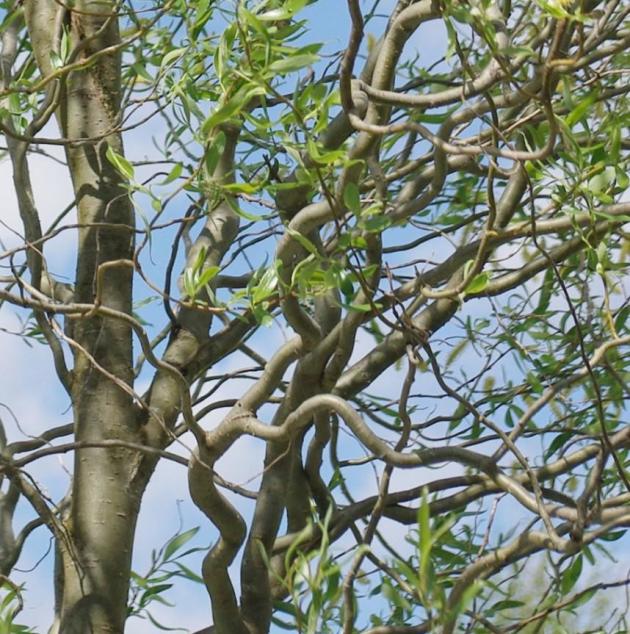
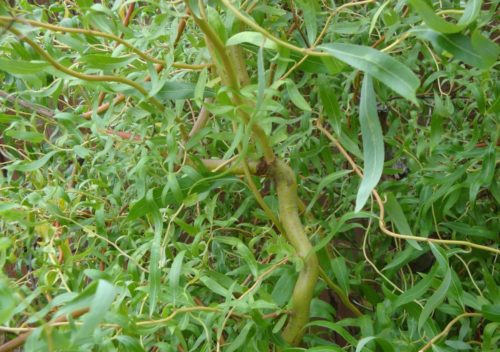
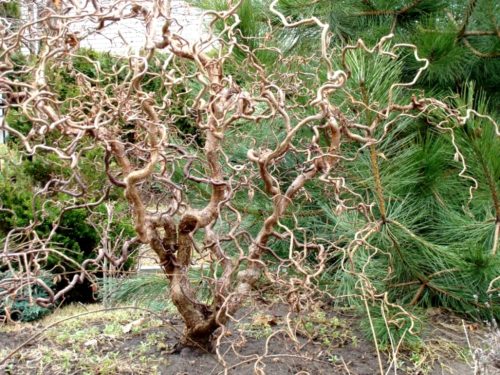
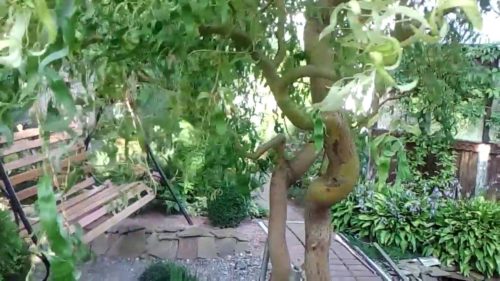
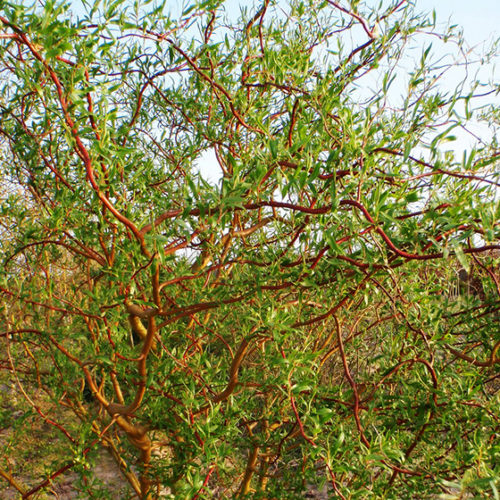
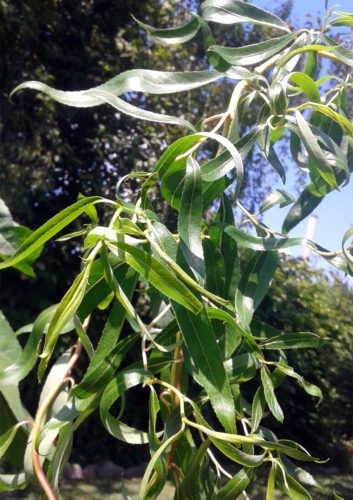
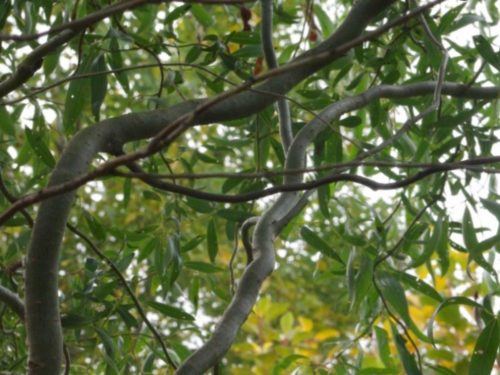
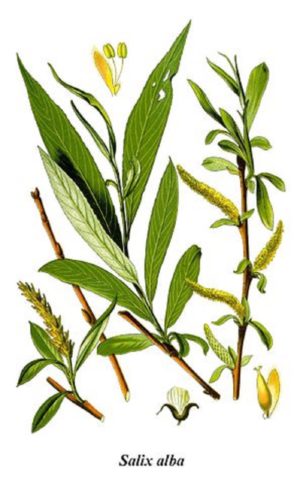
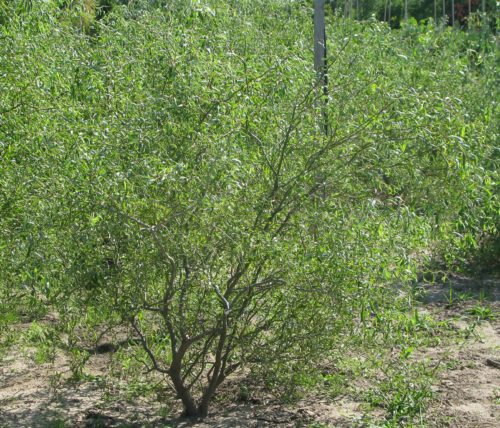
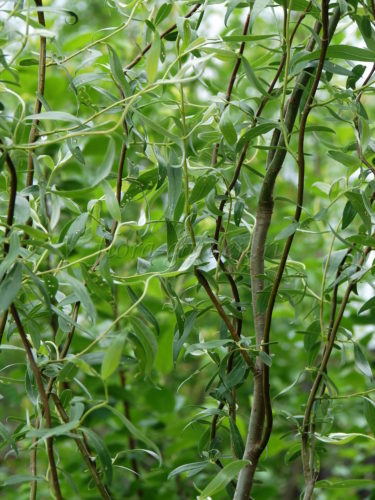
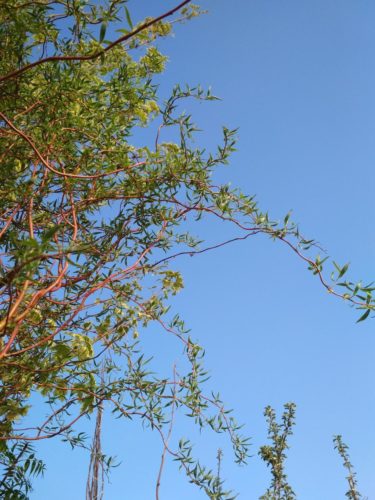
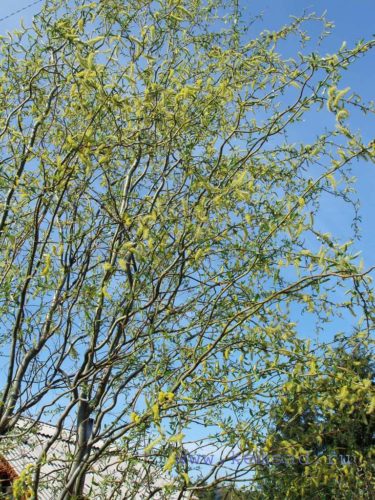
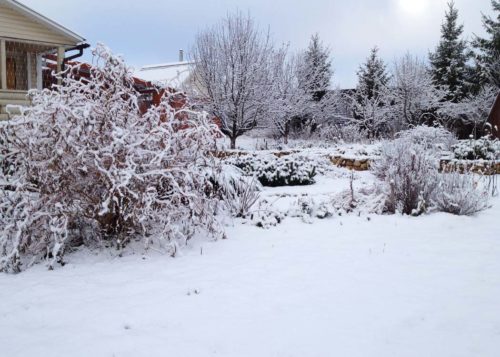
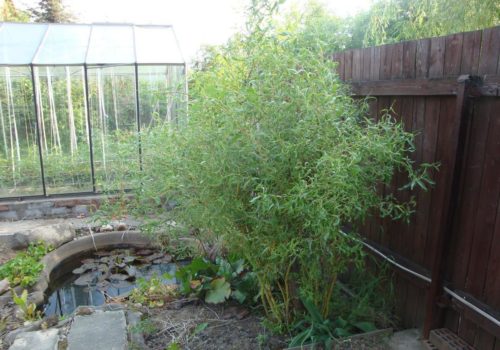












 Start a discussion ...
Start a discussion ...